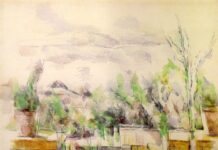English artist Lucy Marks grew up in and around Brighton and lives in Worthing, where she devotes most of her practice to capturing the Sussex landscape in evocative oil and watercolor paintings. For her latest body of work, she set out on an artistic pilgrimage, retracing the footsteps of 19th century master John Constable.
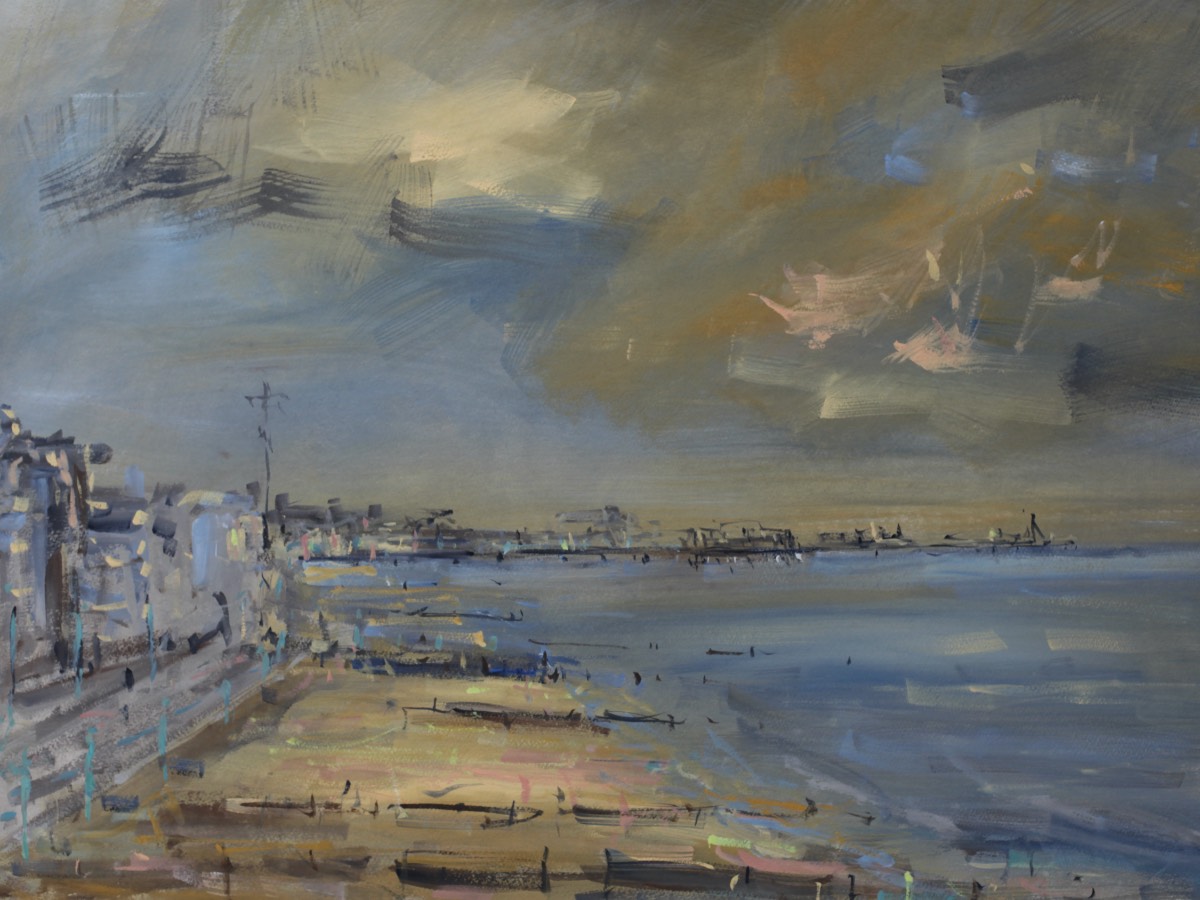
CONSTABLE’S LEGACY
While he spent time with his family in Brighton, from 1824 to 1828, Constable routinely went on three favorite walks, which he recorded in his sketches:
- West, along the seafront, out of Brighton and towards Shoreham. From there, he turned inland, following the River Adur and Mill Hill, overlooking Shoreham Harbour.
- North, going upwards and inland, to the top of the South Downs at Devil’s Dyke, a high point which has many views across Brighton over to the sea, and east and west along the Downs themselves.
- East, along the Undercliff, towards Brighton’s Chain Pier, past today’s marina and on towards Rottingdean.
The four and a half years Constable spent in Brighton were pivotal to his style and practice. He produced around 150 paintings of Brighton and its surroundings, including menacing waves and dark clouds, glittering seas specked with sails, and fishermen busying themselves on the beach.
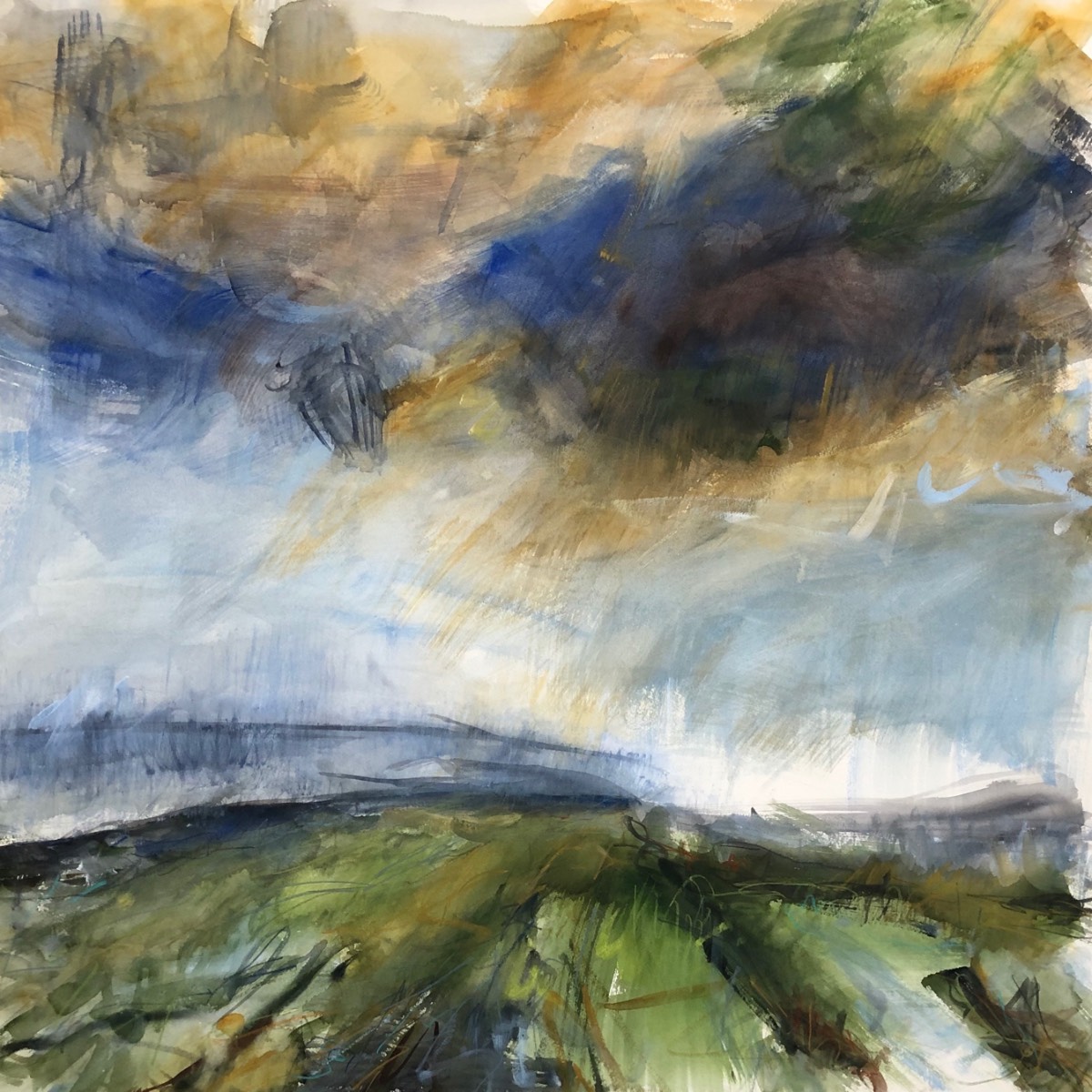
“I am a contemporary British landscape painter,” explains Marks. “As a nation we have had a wealth of great masters in our tradition of landscape painting. Constable is one of those heroes. He was one of a few who tried to change how people saw the landscape, moving from allegory to reality. He worked to capture how the verdant green rolling landscape included real drama in terms of weather and structure.”

MARKS’ PROCESS
Following the same paths her 19th century forefather once walked, Marks traveled with her pochade in the South Downs and along the coast, where the Sussex countryside meets the seaside resort town and the bustling urban coast.
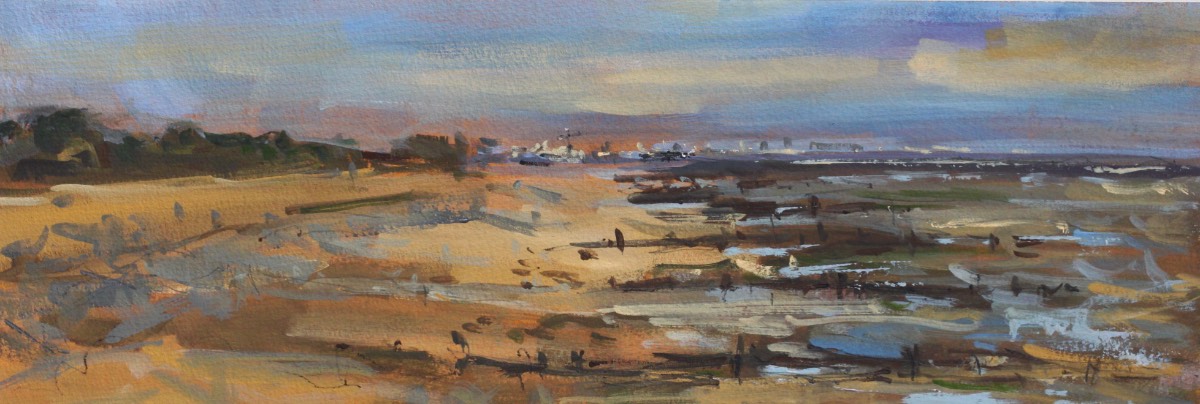
The first part of her creative process was to directly record the landscape in plein air sketches. She also created finished alla prima paintings on location.
Back in the studio, she used both her plein air sketches and alla prima paintings as reference material, distilling the elements and exploring the vibrant landscape in much larger works. Her loose depiction of the Sussex scenery allows viewers to form their own interpretation of the landscape.
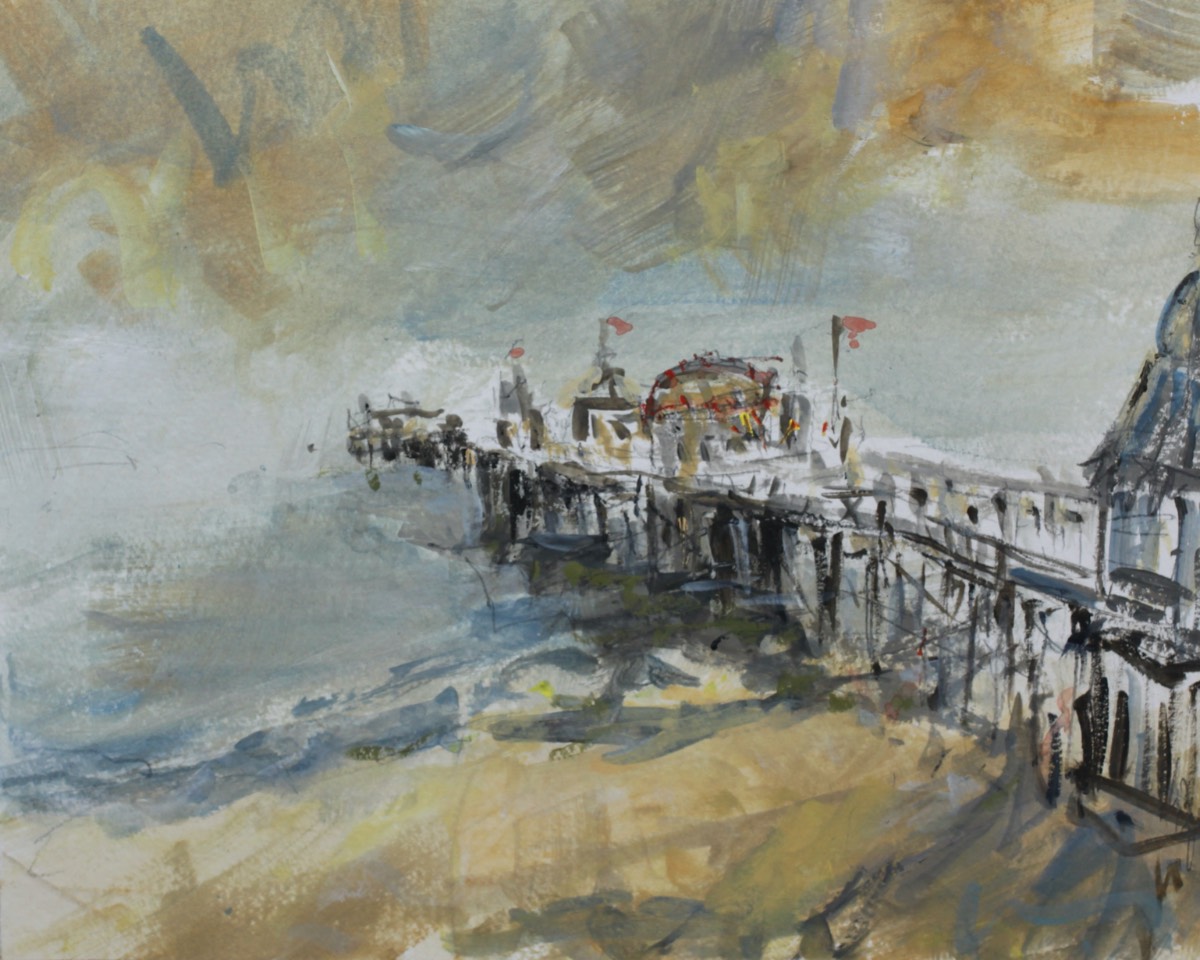
Over 50 of the plein air and studio works inspired by Marks’ recent creative journey were on display in early September as part of her “Constable’s Walks” exhibition at the Royal Watercolour Society Galleries in London.
Lucy Marks can often be spotted out and about with her pochade box, painting in rain, snow, or sunshine.



